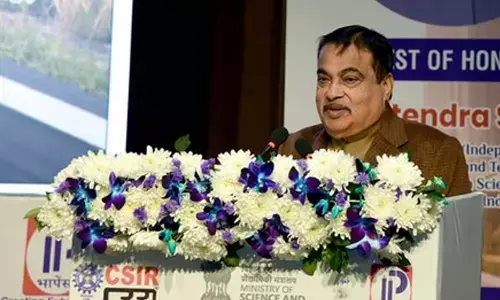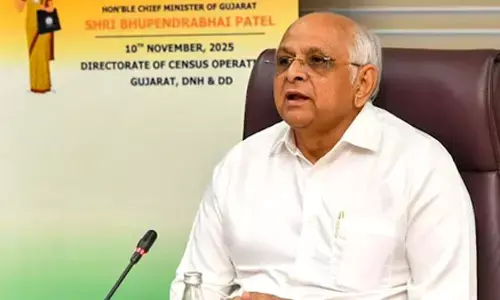Meghalaya's Mawlynnong village clean and green

Rishot Khongthohrem, a 51 year old school teacher who teaches at the CNI LP- Mawlynnong school located in his native village--- Mawlynnong in the state of Meghlaya in India’s North East
Rishot Khongthohrem, a 51 year old school teacher who teaches at the CNI LP- Mawlynnong school located in his native village--- Mawlynnong in the state of Meghlaya in India’s North East was never aware that his effort to promote cleanliness would usher in fame and economic benefits to his village as well.
Similar is the case with the members of the 100 households residing in this small village, who has grown up with cleanliness and everyday strives to keep the village clean and green.

Mawlynnong, which was almost unknown to the rest of the world till 2003 as a result of poor connectivity and no proper motor-able roads shot into fame that same year when it was named the cleanest village in the country.
The leading travel magazine in the country, Discover India, that year had named the village the cleanest village in India, and immediately after that the village had shot into fame and also become a hotspot for both foreign and domestic tourists, who started flocking the village for a glimpse.

In 2005 the same magazine after another research had named it the cleanest village in Asia.
When approached, representatives of the magazine pointed out that cleanliness is as much an issue of personal involvement as it is of governance, and said they focused on collection and orderly disposal of garbage, eco-friendliness of disposal mechanisms, local attitudes to waste, water and natural resources management within the village, and frequency of informal or formal waste audit.
The editor of the magazine Vivek Pareek said that a writer who has reported on rural India for more than a decade for the magazine, and had travelled to every corner of the country was associated with this task, and he had surveyed the measures undertaken by many local municipal bodies, and volunteer organizations across villages in the country.
“As is true for most small villages, it is the attitude and approach of the locals that makes all the difference. The people of the village are shining examples of how you don't need massive equipment or stifling procedures to make a difference to your environment or to protect the local ecology, and after careful observation and study, we named it the cleanest village in the country, and two years later after another such study we named it the cleanest village in Asia,” said Pareek.
According to academicians who have done a detailed study on the village, with the emergence of the village as a popular destination as a result of the ‘cleanest village in India and Asia tag’, focus has been shifted from the state capital Shillong, to this village which is almost 90 kilometers away.
“Mawlynnong has gradually emerged as one of the popular tourist destination in the state of Meghalaya and it has, gradually attracted the attention of tourist and holiday makers both from India and abroad,” said Deigracia Nongkynrih, an assistant professor of the North Eastern Hill University (NEHU), who has done a study on rural tourism in Mawlynnong village.
Today Union Government’s newsletters and documents mentions the village as Asia’s cleanest village and God’s own garden, and the government also describes it as a village that is not only clean and green but also a model of sustainable environmental sanitation and drinking water.
The Union ministry of Drinking Water and Sanitation mentions that Mawlynnong is a model to showcase how collective effort can elevate a village to position itself on the tourism map by promoting eco-tourism.
The ministry also lauds the village as a success story, as the two schools in the village have durable, clean toilets and drinking water with tanks, which is something very rare in village schools in the country.
“Mawlynnong is a complete success story, and this has been achieved through teamwork among the villagers in the village,” said Tapan Kumar Das, an official associated with the ministry who have studied the clean practices of the villagers, and water and sanitation in the village.
On being asked how different is this village from other similar villagers in the country, Das pointed out that in this village, cleanliness is a way of life for the people and children are taught about cleanliness at both home and school, and this ensures that they become conscious about the importance of cleanliness from a very tender age.
The efforts of the villagers was finally rewarded In 2010 when the village received the Nirmal Gram Puraskar (NGP) award, which is a Government of India’s award based incentive scheme for fully sanitized and open defecation free villages, blocks, districts and states.
The award money of `50,000 was utilized for the various development initiatives of the village.
“Till 2003 this village was almost unknown to the rest of the world, and also very few people from our state—Meghalaya knew about it, but now it has become a major success story and has also become a tourism destination, and today finds its place in the government documents,” said Rishot Khongthohrem.
Rishot Khongthohrem also added that literacy is one of the reasons behind this unique success story--the village has cent per cent literacy.
Today the village is a complete success story in terms of cleanliness, and both domestic and foreign tourists flock the village all through the year.
According to the tourism department, the village has become a major tourism destination in the region and during the peak season on an average atleast a hundred tourist visits the village every day.
According to figures available with the tourism department, over 6 lakh 80 thousands domestic tourists and 5 thousand 3 hundred foreign tourists had visited in the state in 2013, and out of this, according to the village council, which keeps a tap on the number of tourists visiting the village, 37 thousand tourists has visited the village.
The Meghalaya tourism department is promoting the village as the cleanest village in the country, and now with it having become a major tourist destination.
According to the Meghalaya tourism department, village and rural tourism is a new concept where tourists are encouraged to visit the villages, stay there and spend time in the peaceful environment of the villages, and familiarize themselves with the unique culture of the villages, and Mawlynnong is an ideal place for such tourism.
Meghalaya chief minister Mukul Sangma, who also holds the tourism portfolio says that, the village has showed the world what team work and awareness can do, and has also sought cooperation from everyone in maintaining healthy environment.
“Mawlynnong has become an important tourist destination now,” said Sangma, and with a focus on developing it as a major destination the state tourism department is planning to allot additional funds for better infrastructure.
According to Nongkynrih, the state government should be able to do much better than the present, as it has a very unique selling point --as the cleanest village, and said that the government authorities should capitalize on this.
The villagers however show no complaints, and said that it has been almost an incentive for these villagers who were earlier solely dependent on agriculture and making broomsticks for a living.
“By staying clean and keeping the village clean, our village has become so famous, and now it has become a major tourist destination, as a result of which so many people are able to earn money now, and it has directly or indirectly come from maintaining cleanliness and being clean,” said Henry Kharrvmba, a local youth who also works as a part time guide in the village.
“This has brought in economic development which was earlier lacking in the village—and now there are 3 guest houses and 4 small home-stays (small guest houses) in the village and besides this few restaurants have also come up,” said Rishot Khongthohrem.
Thomlin Khongthohrem, the village headman pointed out that earlier the lone source of income for these villagers was cultivation, but after the spurt in tourism several revenue earning venues have also come up which includes---home-stays and guest house, restaurants, opportunity to earn money as guide for the tourists etc.
“There are a lot to see in and around the village, and the charges for a guide ranges between Rs. 200 ($3.3) to Rs. 1000 ($16.6). This has created opportunity for the unemployed youths in the village,” said the village headman.
Regarding the surge in income, Rishot Khongthohrem, who himself now owns a small guest house, said that he is also able to earn a good amount of money from his guest house, and this has boosted his income to a big extent.
“My income has gone up several folds, and now I am able to do ample savings as well,” said Rishot Knongthohrem.
Cleanliness: a way of live
The love for cleanliness keeps all the villagers—right from the village elders to the children busy throughout the day, and the day starts with the village women sweeping the roads early in the morning.
The villagers have also devised methods to keep their village clean and this has been remarkably successful.
The villagers have formed a committee comprising of the headman and 10 members to take care of maintaining cleanliness, drinking water and sanitation, and this committee keeps a check on each and every aspect of the life in the village.
“This committee is like a guiding force in the village, and the important decisions related to the village are routed through this committee,” said the village headman.
Few years back the committee had taken a decision on conserving the existing forests, and planting new trees to increase the forest cover and also to keep the top soil intact.
“Once we took this decision, we passed on the message to all the village households and also the schools, and it was encouraging that everyone took it very seriously. Now the forest cover has increased and this has made the surrounding more greener,” said the headman.
For keeping the village clean and for the collection of waste from dustbins from households, the village council engages workers-- two men and five women on a daily basis. These workers are usually from the village itself, but sometimes people from other villages are also engaged.
A male cleaner is paid 200 per day and a female cleaner is paid 120 per day, and usually these are people from the village itself but people from other villages are also often engaged.
“Children in the village are taught about cleanliness from a very young age, and at school the teachers makes it a point to teach the students about cleanliness. Besides this they are also encouraged to take part in cleaning activities both at home and outside,” said Rishot Khongthohrem.
On being asked if it is a part of the school curriculum, he said that lessons on cleanliness are imparted to the students almost everyday outside the lesson timings.
“It is a part of the school curriculum in the two schools in the village, and it has been going on since ages,” he added.
All houses in the village have toilets, which is something rare in Indian villages, and the villagers have also declared it a no-smoking zone.
A dustbin made out of bamboo is found all along the village, and everyone makes it a point that dirt and waste are not thrown everywhere.
“All the waste from the dustbin is collected and kept in a pit, which the villagers use as manure,” said Kharrvmba, and he further added that the villagers are now on a mission to ban plastic.
The fame and the huge inflow of tourists have however not diluted the villager’s love towards cleanliness, and to ensure that the tourists don’t litter and pollute the village, the village guides makes it a point to brief the tourists not to litter the village and about the village’s cleanliness.
People found littering are warned twice or thrice, and then fined between Rs 50 and Rs 100.
“This is a very small amount which any one can pay as fine, but this ensures that the person who is littering takes the issue of cleanliness seriously and usually doesn’t litter again,” said Kharrvmba.
According to Deepal Laloo, of the Meghalaya Tourism Development Forum (MTDF), which has played a major role in the promotion of tourism in this village, the cleanliness of the village is a result of complete team work among all the villagers, and the urge to keep the village clean is there in all the villagers.
Citing an example, Laloo said that some years back, some years back a visitor to the village had spat on the road immediately after stepping off her vehicle, and the immediate reaction of the villager nearby was to call for a bucket of water from his home and cleaned the filth right in front of her.
“Immediately after that the women apologized and she was so impressed that she gave a donation of Rupees one thousand to the village,” said Laloo.
Rishot Khongthohrem pointed out that there is an old story associated with the cleanliness habit of these villagers.
“Around 1887-88 there was a major plague in the village and the villagers then being very ignorant thought that it is as a result of evil spirits and they were very frightened. Around that time some missionaries had landed up here and they explained that it has nothing to do with evil spirits and advised all the villagers to maintain cleanliness in the village,” said Rishot Khongthohrem.
Khongthohrem added that, since that very moment cleanliness became a part of life for all the households in this village.
The incredible success story of this village has also found praise in the government circle, and Meghalaya state labour and urban affairs minister Ampareen Lyngdoh, who was also the tourism minister earlier, describes Mawlynnong as Meghalaya's 'crown jewel'.
"There are many lessons to be learnt from a nondescript and almost isolated village, and Mawlynnong has proved exactly that" said the minister.
Next Story















